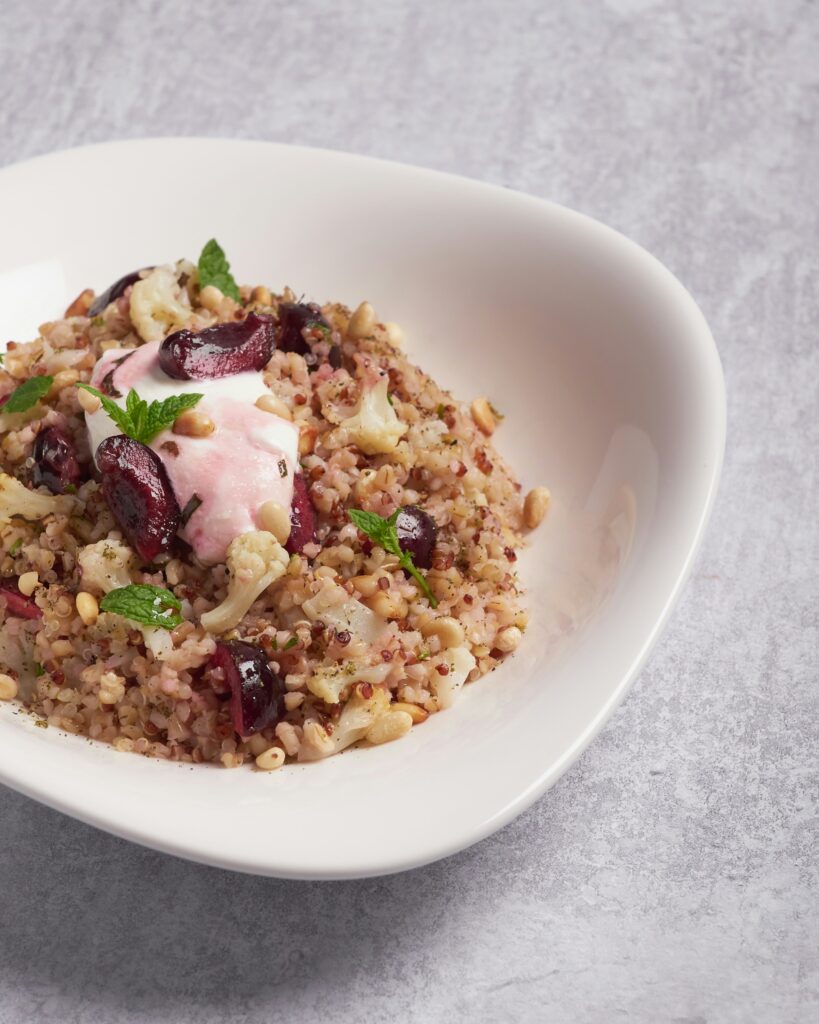Thinking about going vegan or simply looking to streamline your plant-based meals? One of the best ways to succeed with a vegan lifestyle is by keeping your kitchen stocked with versatile, nutritious staples. These pantry and fridge essentials will make it easy to whip up quick, delicious, and satisfying meals—without stress. Discover the top 10 must-have vegan kitchen staples that make plant-based eating simple, healthy, and delicious—perfect for beginners and seasoned vegans alike.
1. Legumes (Lentils, Chickpeas, Beans)– Vegan Kitchen Staples
Legumes—such as lentils, chickpeas, black beans, kidney beans, and more—are an essential cornerstone of any well-stocked vegan kitchen. These humble ingredients are nutritional powerhouses, rich in plant-based protein, complex carbohydrates, fiber, and a variety of vital micronutrients including iron, folate, magnesium, and potassium. Whether you’re looking to increase your protein intake or add hearty texture to your meals, legumes are a delicious and budget-friendly solution.
Their versatility is unmatched in plant-based cooking. You can incorporate legumes into a wide range of dishes, from warming soups, stews, and aromatic curries to hearty salads, satisfying burgers, savory dosas, and creamy dips like hummus. Lentils cook relatively quickly and are perfect for quick weekday meals, while beans and chickpeas can be prepared in bulk and stored for future use. For those seeking convenience, canned versions are a great time-saving option, although dried legumes purchased in bulk offer excellent value and allow for full control over seasoning and texture during cooking.

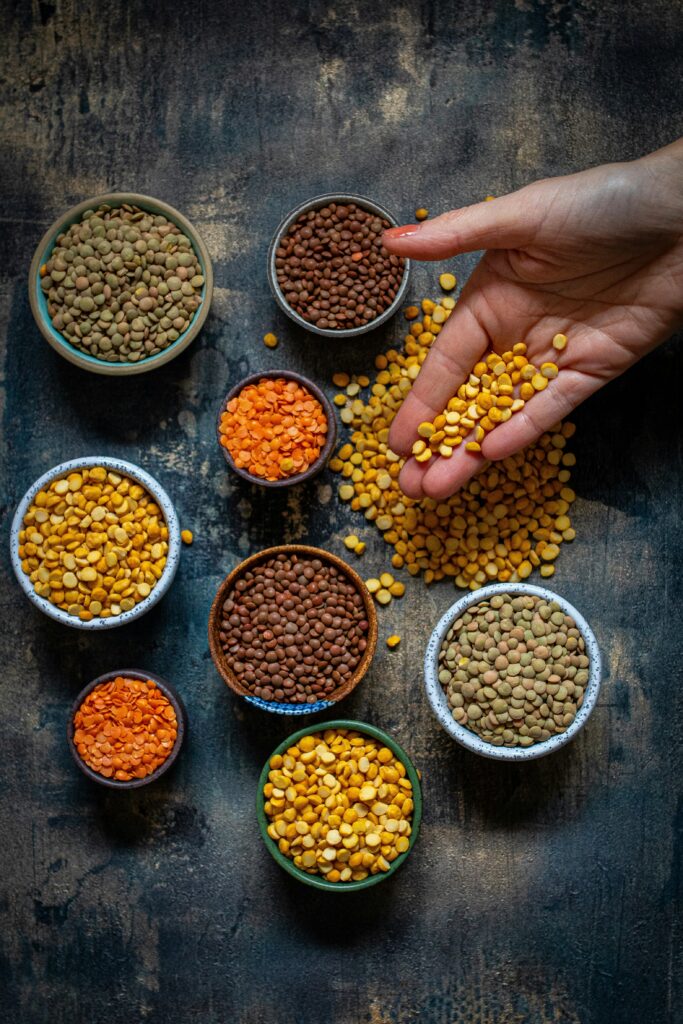
Whether you’re new to plant-based eating or a seasoned vegan, legumes should always have a place in your pantry. They are not only nutritious and filling but also sustainable and widely available. So next time you’re at your local grocery store or bulk food market, stock up on a variety of legumes to ensure you always have the foundation for a wholesome and satisfying vegan meal on hand.
2. Whole Grains (Oats, Brown Rice, Quinoa,)
Whole grains are a foundational component of a balanced vegan diet, providing long-lasting energy through complex carbohydrates, along with a rich supply of essential nutrients. Unlike refined grains, whole grains retain all three parts of the grain kernel—the bran, germ, and endosperm—which means they are packed with fiber, B vitamins (like niacin, thiamine, and folate), iron, magnesium, selenium, and antioxidants. These nutrients play crucial roles in supporting metabolism, heart health, digestion, and overall energy levels.
Common whole grains such as oats, brown rice, and quinoa are incredibly versatile and can be used in meals throughout the day. Oats, for example, are ideal for a nourishing breakfast—whether as classic oatmeal, overnight oats, or added to smoothies and baked goods for extra texture and fiber. Brown rice is a hearty and affordable staple that pairs well with stir-fries, vegetable bowls, curries, and stuffed vegetables. Quinoa, often referred to as a “complete protein” because it contains all nine essential amino acids, is a great addition to grain salads, wraps, soups, and even desserts. It cooks quickly and has a pleasant, slightly nutty flavor.
Cooking whole grains in larger batches at the start of the week is a smart strategy for efficient meal prep. Stored properly in the refrigerator, pre-cooked grains can last several days and be easily added to lunches and dinners, helping you save time while still eating healthfully. Additionally, whole grains are naturally gluten-free (with the exception of some, like barley and farro), making them suitable for those with gluten sensitivities or celiac disease—just be sure to check packaging for cross-contamination if needed.
By incorporating a variety of whole grains into your meals, you’re not only enhancing flavor and texture but also boosting the nutritional profile of your diet. They’re filling, affordable, widely accessible, and can form the base of countless plant-based dishes. So, the next time you’re planning your grocery list, be sure to stock up on a range of whole grains to fuel your day with wholesome, plant-powered energy.
🥛 3. Plant-Based Milk – A Compassionate and Nutritious Dairy Alternative
Plant-based milk has become a staple in vegan kitchens around the world, serving as a delicious, versatile, and ethical alternative to traditional dairy milk. Whether you’re adding it to your morning cereal, blending it into smoothies, frothing it for coffee, or using it in baking and savory recipes, plant-based milk offers a cruelty-free option that doesn’t compromise on taste or functionality.
For many of us, giving up dairy can feel like a major hurdle—especially if we’ve grown up relying on cow or buffalo milk as a primary source of nutrition. I personally used to consume dairy regularly and believed it was essential for my strength and well-being. Letting go of milk was one of the most difficult steps for me. Initially, I slipped up a few times and returned to drinking milk out of habit or convenience. But as I learned more about the dairy industry—the forced impregnations, the separation of calves from their mothers, the unsanitary and inhumane conditions, and the routine use of hormones and antibiotics—I began to question what I was really supporting and consuming. The more I learned, the more I realized that the milk I once believed to be “natural” and nourishing came at a great cost to animals, the environment, and potentially even my own health.
I also understand that avoiding dairy can be even more challenging in rural or village settings, where milk has long been considered a dietary staple and a cultural norm. But today’s dairy industry has changed significantly. In the race for higher production, many animals are subjected to unnatural practices and chemical injections to increase milk yield. This modern model raises ethical, health, and environmental concerns that are hard to ignore.
Thankfully, there’s no shortage of plant-based milk alternatives that are both accessible and nutritious. Popular options include:
- Almond Milk – Light and slightly nutty, perfect for smoothies, coffee, and cereal.
- Soy Milk – One of the most protein-rich options, with a creamy texture great for cooking and baking.
- Oat Milk – Naturally sweet and very smooth, ideal for lattes, baking, and oatmeal.
- Coconut Milk – Rich and flavorful, great for curries, desserts, and tropical smoothies.
- Cashew Milk – Creamy and mild, often used in sauces, soups, and dairy-free cheeses.
When choosing plant-based milk, it’s best to opt for unsweetened and fortified varieties. Many commercial brands fortify their products with calcium, vitamin D, and vitamin B12—key nutrients that support bone health and energy levels, particularly important in vegan diets. Always check the label for added sugars, additives, and preservatives, and try experimenting with different types to find the ones that best suit your taste and cooking needs.
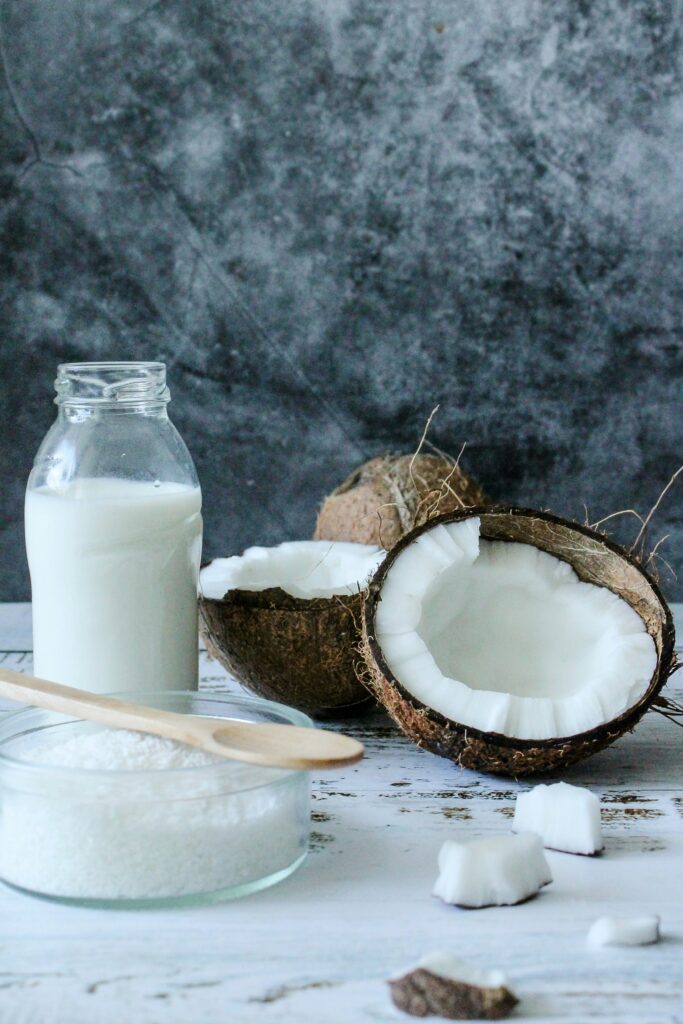
Making the switch to plant-based milk is not just a dietary change—it’s a conscious step toward more compassionate living. Whether your motivation is health, animal welfare, or sustainability, incorporating plant-based milk into your diet is a simple yet powerful choice. So, next time you’re at the store, explore the growing variety of dairy-free milk options and find the ones that nourish both your body and your values.
4. Nut Butters (Peanut, Almond, Cashew)–Creamy, Nutritious, and Full of Flavor
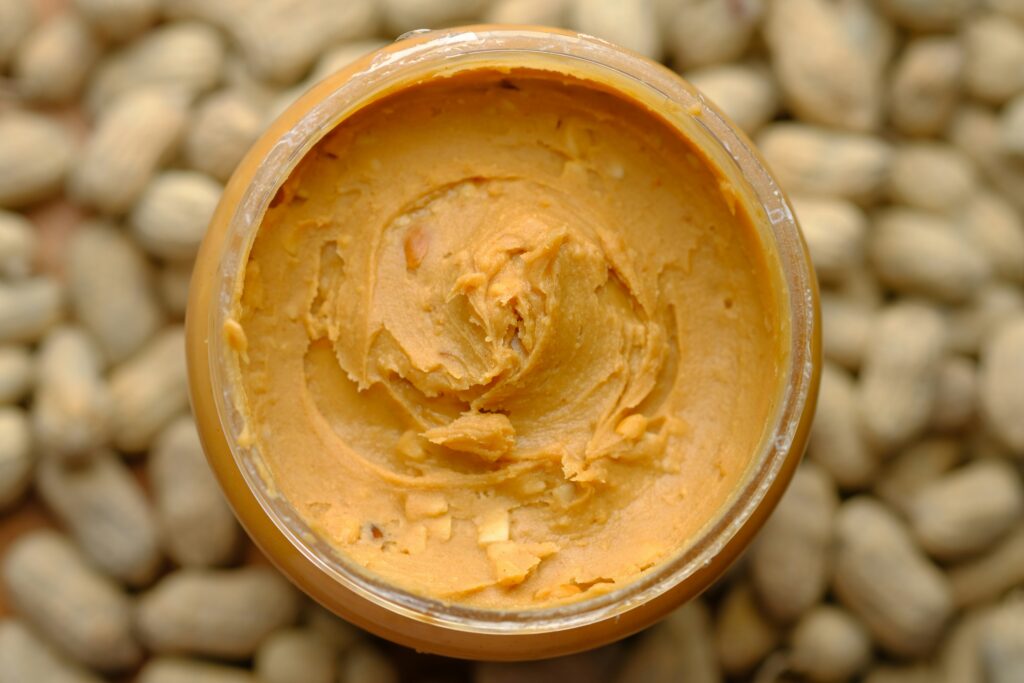
Nut butters are a must-have in any well-stocked vegan pantry. These creamy spreads, made from ground nuts like peanuts, almonds, and cashews, are not only irresistibly delicious but also offer a wealth of health benefits. Packed with healthy fats, protein, fiber, and essential vitamins and minerals like vitamin E, magnesium, and potassium, nut butters are a fantastic option for anyone looking to fuel their body with nutrient-dense, plant-based goodness.
The beauty of nut butters is their versatility. You can use them in a variety of ways, from slathering them on toast or adding them to smoothies for a creamy, filling texture, to using them in sauces, dips, and baked goods for added richness and flavor. Nut butters are an excellent source of plant-based protein, making them an ideal addition to vegan and vegetarian diets. For a quick snack, simply pair your favorite nut butter with fruits like apple slices or banana, or spread it on whole grain crackers for a satisfying and energy-boosting bite.
Some popular types of nut butters include:
- Peanut Butter – A classic favorite, peanut butter is rich in healthy monounsaturated fats and protein. It’s perfect for spreading on toast, making PB&J sandwiches, or adding to smoothies for a nutty twist.
- Almond Butter – Slightly milder and sweeter than peanut butter, almond butter is loaded with heart-healthy fats, vitamin E, and antioxidants. It works beautifully in baking, sauces (think almond butter noodles or satay), and can be drizzled over oatmeal for a protein-packed breakfast.
- Cashew Butter – Known for its smooth, creamy texture and subtly sweet flavor, cashew butter is an excellent choice for making dairy-free creamy sauces, dressings, or as a base for vegan cheese. It’s also great as a dip for fruits, vegetables, or simply spread on crackers.
Nut butters are not only delicious and versatile but also provide a sustainable source of energy. The healthy fats found in nuts are essential for maintaining optimal brain function, heart health, and promoting satiety. Unlike processed snacks and spreads, nut butters offer a more wholesome, nutrient-packed option to satisfy your hunger and keep you energized throughout the day.
When purchasing nut butters, try to choose natural, unsweetened, and minimally processed versions. Many store-bought nut butters contain added sugar, salt, or unhealthy oils, which can detract from their health benefits. A good rule of thumb is to look for a product with just nuts (and possibly a little salt) as the only ingredients. You can also make your own nut butter at home by blending roasted nuts in a food processor until smooth, which allows you to control the ingredients and texture.
Incorporating nut butters into your daily meals is an easy and satisfying way to boost your intake of healthy fats and protein. Whether you’re looking for a quick snack, a creamy addition to your favorite recipes, or a tasty spread to enjoy on toast, nut butters are the perfect kitchen staple to have on hand.
5. Tofu and Tempeh🌱-Soy-Based Proteins Packed with Versatility and Flavor
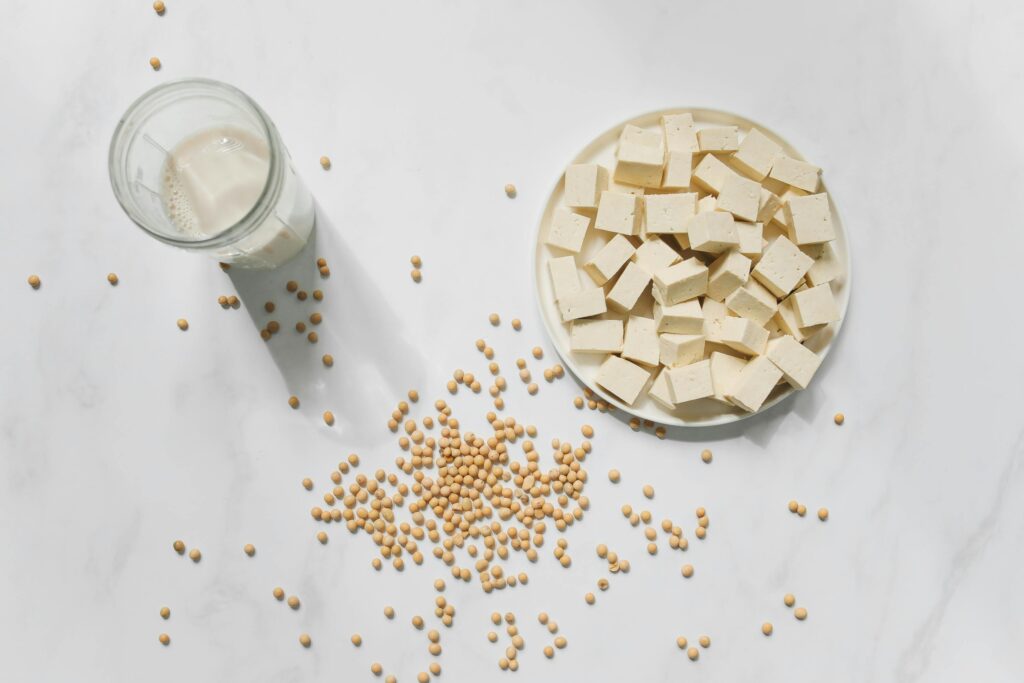
Tofu and tempeh are two of the most popular plant-based protein sources in vegan cooking, and for good reason. These soy-based products are not only packed with protein, fiber, and essential amino acids, but they’re also incredibly versatile, taking on flavors like a blank canvas. Whether you’re craving a hearty stir-fry, a satisfying sandwich, or a protein-packed scramble, tofu and tempeh can be transformed into a wide range of delicious dishes that satisfy both your taste buds and your nutritional needs.
Tofu
Tofu, often called “bean curd,” is made by coagulating soy milk into solid blocks. It comes in various textures, ranging from silken (smooth and creamy) to firm (dense and hearty), which makes it perfect for a variety of cooking methods. Its mild flavor acts as a perfect base for absorbing the flavors of spices, sauces, and marinades.
- Stir-fries: Firm tofu cubes can be sautéed or stir-fried with vegetables and sauces like soy sauce, sesame oil, or curry paste for a quick and filling meal.
- Scrambles: Crumbled firm tofu makes an excellent substitute for scrambled eggs, especially when seasoned with turmeric, garlic powder, and black salt (for that “eggy” flavor). Add veggies and nutritional yeast for extra flavor and nutrients.
- Marinated dishes: Tofu can soak up a variety of marinades, whether you prefer something savory like teriyaki or a tangy citrus-based dressing. Marinate tofu for at least 30 minutes to get the full flavor absorption.
Pro Tip: For a firmer, more meaty texture, always press tofu before cooking. Pressing removes excess water, which allows tofu to soak up more flavor and achieve a crispier exterior when cooked. Simply wrap the tofu in a clean towel or paper towels and place a heavy object on top to help squeeze out the water, or use a tofu press if you have one.
Tempeh
Tempeh is made from fermented soybeans and has a nutty, earthy flavor and a firm, chewy texture. It’s typically sold in blocks and can be sliced, crumbled, or cubed. Due to its fermentation process, tempeh is rich in probiotics, which support gut health, and it’s a great source of protein, iron, and fiber.
- Stir-fries and sautés: Slice tempeh into thin strips or cubes and sauté it with vegetables, sauces, and seasonings. Its firm texture makes it ideal for adding a “meaty” bite to any dish.
- Sandwiches and wraps: Tempeh slices can be used in sandwiches or wraps, often paired with fresh veggies, avocado, and a tasty dressing or sauce. It works beautifully in a tempeh bacon recipe for a vegan twist on BLTs.
- Marinated dishes: Like tofu, tempeh absorbs marinades very well. You can marinate tempeh in anything from BBQ sauce to soy sauce, garlic, and ginger. After marinating, tempeh can be grilled, pan-fried, or even baked.
Both tofu and tempeh are excellent sources of plant-based protein, making them perfect for anyone looking to incorporate more meatless meals into their diet. They are also low in fat, cholesterol-free, and packed with beneficial minerals like calcium and magnesium. Plus, since tempeh is fermented, it contains beneficial probiotics that support digestive health, making it a great addition to a balanced, gut-friendly diet.
Versatility and Flavor Absorption
One of the best aspects of both tofu and tempeh is their ability to absorb the flavors of whatever they’re cooked with. Whether you’re using tofu in a creamy, spiced curry or tempeh in a savory, smoky BBQ dish, both ingredients shine when marinated and cooked properly. For an extra punch of flavor, try crispy baked tofu or tempeh in a stir-fry with a rich peanut sauce, or serve them in a fresh salad with a tangy dressing.
Both tofu and tempeh are staples in vegan cooking due to their ability to take on virtually any flavor profile and their nutritional density. They are filling, affordable, and can be used in a variety of dishes, making them excellent options for meal prep and quick, satisfying meals.
6. Nuts and Seeds (Chia, Flax, Pumpkin, Sunflower)-Best Vegan Kitchen Staples
Nuts and seeds are among the best vegan kitchen staples to have on hand, providing a rich source of essential nutrients, healthy fats, protein, and fiber. These tiny powerhouses are packed with omega-3 fatty acids, which are essential for heart and brain health, as well as antioxidants, vitamins, and minerals like magnesium, zinc, and vitamin E. Whether you’re using them as snacks, toppings, or key ingredients in meals and baked goods, nuts and seeds offer a variety of health benefits and culinary possibilities.
Chia Seeds
Chia seeds are tiny but mighty, offering a concentrated source of omega-3 fatty acids, fiber, and plant-based protein. Just a tablespoon of chia seeds contains about 5 grams of fiber and 2 grams of protein, making them an excellent addition to any meal. They also have the unique ability to absorb liquid and swell into a gel-like texture, making them perfect for creating chia puddings or thickening smoothies.
- Use in oatmeal: Stir chia seeds into your morning oats for an extra boost of fiber and omega-3s.
- Smoothies: Add a tablespoon of chia seeds to smoothies for added texture and nutrients.
- Baking: Chia seeds can also be sprinkled into muffins, pancakes, and other baked goods for an extra nutritional punch.
Bonus Tip: Chia seeds are an excellent egg replacer in vegan baking. To create a “chia egg,” simply mix 1 tablespoon of ground chia seeds with 3 tablespoons of water, let it sit for a few minutes to thicken, and use it as you would a regular egg.
Flax Seeds
Flax seeds are another excellent source of omega-3s, fiber, and lignans (antioxidants that help protect against oxidative stress). Like chia, flax seeds are also high in soluble fiber, which can support digestive health and help regulate blood sugar levels.
- Use in smoothies and oatmeal: Ground flax seeds can be sprinkled into smoothies or stirred into oatmeal to boost nutrition.
- Energy balls and snacks: Flax seeds are a great addition to energy balls, granola bars, or trail mixes, providing fiber and healthy fats to fuel your day.
- Baking: Ground flax seeds work as a vegan egg substitute, just like chia. Combine 1 tablespoon of ground flax with 3 tablespoons of water and let it sit for a few minutes until it thickens. This works especially well in recipes like muffins, cookies, and pancakes.
Pumpkin Seeds
Pumpkin seeds, or pepitas, are a great source of plant-based protein, iron, magnesium, zinc, and healthy fats. They are crunchy, slightly sweet, and offer a satisfying texture in various dishes. Plus, pumpkin seeds are rich in antioxidants, which can support the immune system and reduce inflammation.
- Use in salads: Toss pumpkin seeds into salads for added crunch and protein.
- Smoothies: Blend a handful of pumpkin seeds into your smoothies for a protein boost.
- Baking: Pumpkin seeds add a lovely crunch when sprinkled on top of breads, muffins, or granola.
Sunflower Seeds
Sunflower seeds are nutrient-dense, offering a good dose of healthy fats, vitamin E, and magnesium. They’re also high in protein, making them a great snack on their own or a healthy addition to various recipes.
- Use in oatmeal: Sunflower seeds can be sprinkled on top of your morning oatmeal or mixed into overnight oats for an added crunch.
- Baked goods: Incorporate sunflower seeds into cookies, bread, or muffins for a crunchy texture.
- Salads and bowls: Toss them into salads, grain bowls, or roasted vegetable dishes for extra protein and crunch.
Nutritional Benefits and Versatility
The beauty of nuts and seeds lies in their versatility—they can be eaten as a snack, added to a variety of meals, or used to enhance the nutritional value of your recipes. These plant-based foods are ideal for snacking on the go, adding to your morning smoothie, sprinkling over salads, or baking into your favorite treats. Beyond their texture and flavor, nuts and seeds are loaded with healthy fats (especially omega-3s), protein, and fiber, all of which promote satiety, support digestion, and boost energy levels throughout the day.
Pro Tip: To get the most out of your seeds and nuts, try to buy raw and unsalted versions. Roasting and salting can sometimes remove some of their beneficial nutrients, so opt for raw or lightly roasted options when possible. Additionally, grinding seeds like flax and chia helps improve nutrient absorption and makes them easier to incorporate into a variety of dishes.
By stocking up on a variety of nuts and seeds, you can easily boost the nutritional content of your meals, snacks, and desserts. These small but mighty ingredients pack a big punch, offering everything from healthy fats and protein to antioxidants and fiber. So, the next time you’re grocery shopping, don’t forget to pick up chia, flax, pumpkin, and sunflower seeds—your body will thank you!
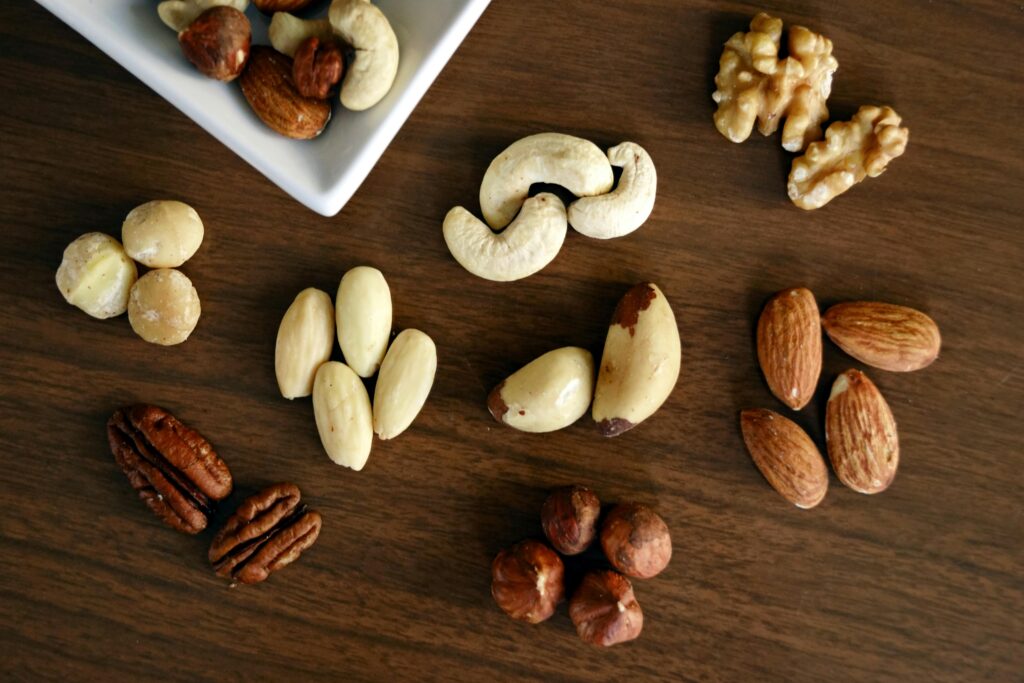
7. Leafy Greens (Spinach, Kale, Arugula) – Nutrient-Rich Powerhouses for Your Vegan Diet
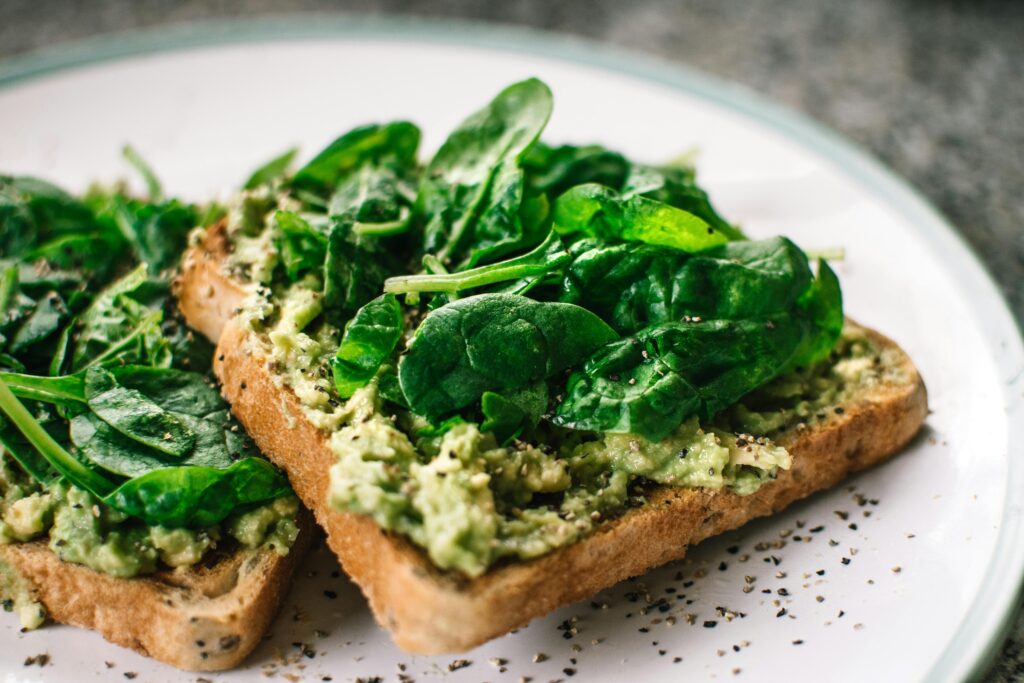
Leafy greens are some of the most nutrient-dense foods you can include in your diet, and they should definitely be a staple in your vegan kitchen. Packed with essential vitamins, minerals, fiber, and antioxidants, these greens are a powerful ally for anyone seeking to boost their health while enjoying flavorful, plant-based meals. For vegans, leafy greens are especially important sources of iron, calcium, and vitamin K, nutrients that are key for maintaining healthy bones, blood, and overall well-being.
Spinach
Spinach is one of the most versatile leafy greens out there, offering a mild flavor and a nutrient profile that’s second to none. It’s a rich source of iron, calcium, and vitamin A, all of which are vital for energy, bone health, and immune function. Spinach is also packed with folate, which supports cellular growth and repair.
- Use in smoothies: Fresh spinach blends easily into smoothies, adding a boost of nutrients without overpowering the flavor.
- Salads: Tender baby spinach leaves are perfect for raw salads, often paired with fruit, nuts, or a tangy vinaigrette.
- Sautéed or in soups: Spinach wilts quickly, making it an ideal addition to soups, stews, or sautés. It pairs beautifully with garlic, onions, and olive oil.
Kale
Kale is another nutritional powerhouse and is often touted as one of the most nutrient-dense vegetables on the planet. Kale is high in vitamin K, vitamin A, and vitamin C, as well as calcium and potassium. It also contains antioxidants like lutein and zeaxanthin, which support eye health and protect the body from oxidative stress.
- Use in salads: Curly kale can be massaged with olive oil and lemon juice to soften its texture and make it more palatable for raw salads.
- Smoothies: Kale’s slightly bitter flavor works well in smoothies when paired with fruit, and it provides a hearty dose of vitamins and minerals.
- Sautéed or baked: Kale is perfect for sautéing with garlic and adding to grain bowls or stir-fries. Kale chips are also a popular snack, baked with olive oil and seasonings for a crispy, nutritious treat.
Pro Tip: Kale has a tough stem that can be removed easily by stripping the leaves off the central stalk. For a more tender texture, you can massage the leaves with a little olive oil or dressing, which helps break down the fibers.
Arugula
Arugula, also known as rocket, has a peppery flavor that adds a nice kick to dishes. While not as dense as spinach or kale in terms of iron and calcium, arugula is still a fantastic source of vitamin K, folate, and vitamin C. Its slightly bitter flavor is perfect for adding complexity to salads and bowls.
- Use in salads: Arugula makes an excellent base for salads, especially when paired with fruits like strawberries, pomegranate, or oranges, as well as nuts and seeds for crunch.
- Wraps and sandwiches: The peppery bite of arugula is a perfect complement to wraps and sandwiches, adding flavor without overpowering the other ingredients.
- Toppings for pizzas and pastas: Fresh arugula is often used as a topping for pizza, added just before serving to preserve its vibrant flavor, or tossed into pasta dishes for a burst of color and nutrition.
Why Leafy Greens Are Essential for Vegans
For those following a vegan diet, leafy greens provide crucial nutrients that may be harder to come by in plant-based foods. Iron, found in abundance in greens like spinach and kale, is essential for oxygen transport in the blood and maintaining energy levels. However, it’s important to note that the type of iron in plant-based foods (non-heme iron) is not absorbed as efficiently as the iron found in animal products. To boost absorption, pair leafy greens with vitamin C-rich foods like citrus, bell peppers, or tomatoes, which can help enhance the uptake of iron.
In addition to iron, leafy greens are great sources of calcium, which is vital for bone health. Many varieties, including kale and collard greens, provide a plant-based alternative to dairy products, making them essential for vegans who are looking to maintain strong, healthy bones.
Versatility in the Kitchen
Leafy greens are incredibly versatile in the kitchen. They can be used in a wide variety of dishes, from smoothies and salads to soups, stews, wraps, and sautéed dishes. Adding a handful of greens to your meals not only boosts nutritional content but also adds texture, flavor, and color. You can use them fresh or cooked, depending on your preferences and the dish you’re preparing.
- Smoothies: Add a handful of spinach, kale, or arugula to your daily smoothie for a quick nutrient boost.
- Soups and stews: Toss in some kale or spinach at the end of cooking to let them wilt into the soup, adding both flavor and nutrition.
- Sautéed: Quickly sauté leafy greens with garlic, olive oil, and a pinch of salt for a simple side dish or a topping for grains like quinoa or rice.
- Wraps and sandwiches: Use leafy greens as a base or a filling in wraps or sandwiches for added crunch and freshness.
How to Enjoy Leafy Greens
The best way to enjoy leafy greens is to incorporate them into your meals regularly, either raw or cooked. If you’re new to eating more greens, start by adding them gradually into dishes you already love. They are incredibly adaptable, so you can experiment with different varieties and preparation methods to find what you like best.
Leafy greens are essential for a balanced, nutrient-dense vegan diet. They provide key vitamins and minerals, support healthy digestion, and offer a wide range of cooking possibilities. Whether you’re tossing them into a smoothie, massaging them into a salad, or incorporating them into a savory stir-fry, leafy greens should be a regular part of your meal planning. So, next time you’re at the grocery store, stock up on spinach, kale, and arugula to keep your diet vibrant and full of plant-powered goodness.
8. Canned Tomatoes and Tomato Paste-Vegan Kitchen Staples
Canned tomatoes and tomato paste are absolute essentials in the vegan kitchen, offering both convenience and rich, vibrant flavor to a wide range of dishes. These pantry staples are incredibly versatile and form the base of many plant-based recipes, from hearty stews and soups to rich pasta sauces, curries, and chili. Having a few varieties on hand ensures that you’re always ready to create a satisfying, flavorful meal with minimal prep.
Canned Tomatoes
Canned tomatoes are one of the most essential ingredients to have in your pantry. Available in various forms, including whole tomatoes, diced, crushed, and fire-roasted, canned tomatoes provide the perfect base for many dishes. They offer the natural sweetness, acidity, and depth of flavor that fresh tomatoes can sometimes lack, particularly when tomatoes are out of season.
- Crushed Tomatoes: Crushed tomatoes are great for making pasta sauces, soups, and stews. Their smooth, semi-liquid consistency makes them perfect for creating rich, velvety sauces without the need for excessive simmering.
- Diced Tomatoes: Diced tomatoes are ideal for chunkier dishes like chili, tacos, or vegetable stews. Their firm texture holds up well in soups and sauces, providing an appealing bite and a burst of flavor.
- Whole Tomatoes: Whole canned tomatoes are often the most versatile and are commonly used in long-cooked dishes like sauces or stews. When using whole tomatoes, you can crush them by hand or with a spoon during cooking, allowing you to control the texture of the final dish.
- Fire-Roasted Tomatoes: Fire-roasted canned tomatoes are a great option for adding a smoky, charred flavor to your recipes. They work wonderfully in chili, smoky pasta sauces, and vegetable stews.
Tomato Paste
Tomato paste is a concentrated form of tomatoes, made by cooking tomatoes down to a thick consistency. It’s a highly versatile ingredient that brings a deep, rich tomato flavor to dishes with just a small amount. Tomato paste is often used as a flavor enhancer, and a little goes a long way.
- Use in sauces and curries: Tomato paste is perfect for creating the base of sauces, curries, and soups. It adds depth and umami, especially when sautéed with onions, garlic, and spices. It’s the secret ingredient for making tomato-based sauces extra rich and flavorful.
- Baking and simmering: Tomato paste is often added to baked dishes like casseroles, lasagna, or vegan meatballs to enhance the tomato flavor and create a thicker, more luxurious sauce.
- Sautéing: For an even deeper flavor, sauté tomato paste with aromatics like onions, garlic, and herbs before adding liquids to your dish. This step enhances the natural sweetness of the tomatoes and adds complexity to your cooking.
Why You Need Canned Tomatoes and Tomato Paste in Your Pantry
Having canned tomatoes and tomato paste in your pantry ensures that you’re never without the base for a delicious sauce or stew, no matter what’s in season. These staples are perfect for those times when you’re craving a comforting, tomato-forward dish but don’t have fresh tomatoes on hand. Additionally, canned tomatoes are rich in lycopene, a powerful antioxidant that supports heart health and has anti-inflammatory properties.
The convenience factor cannot be overstated. Instead of waiting for fresh tomatoes to ripen or worrying about spoilage, canned tomatoes and paste are available year-round, offering a consistent quality and flavor. They’re also quick to use, making them ideal for busy weeknights or meal prep.
Pro Tip: Stock a Variety for Different Needs
There’s no one-size-fits-all when it comes to canned tomatoes and paste, so it’s a good idea to stock a few different varieties to suit various recipes. For example, having crushed tomatoes on hand is essential for smooth sauces, while diced tomatoes are perfect for chunky stews and chilis. Fire-roasted tomatoes can add a smoky element to your dishes, and tomato paste is your go-to for richening and intensifying tomato-based flavors.
When purchasing canned tomatoes, try to look for organic and BPA-free cans, when possible, as some brands may use harmful chemicals in their can linings. Many brands now offer more sustainable, eco-friendly packaging as well, so it’s worth checking labels if you’re mindful of your environmental footprint.
Recipes You Can Make with Canned Tomatoes and Tomato Paste
Here are just a few ideas to get you started with your canned tomato pantry staples:
- Vegan Chili: A hearty, comforting dish made with canned diced tomatoes, beans, and spices. Add a little tomato paste for richness and depth.
- Tomato Basil Pasta Sauce: Simmer crushed tomatoes, tomato paste, garlic, onion, basil, and olive oil for a rich and fragrant pasta sauce.
- Vegan Tacos: Use diced tomatoes and tomato paste as a base for a smoky, spiced taco filling with onions, garlic, and black beans.
- Lentil Soup: Combine canned tomatoes with lentils, carrots, and celery for a nourishing and easy-to-make lentil soup.
- Curry or Stew: Canned tomatoes and tomato paste form the base of a variety of curries and stews, adding both tanginess and umami flavor.
Canned tomatoes and tomato paste are indispensable in any vegan kitchen. Whether you’re creating a simple marinara sauce or a complex curry, these pantry essentials will save you time while giving your dishes incredible depth of flavor. Stock up on different varieties to ensure you’re always ready to whip up something delicious, comforting, and nutritious.
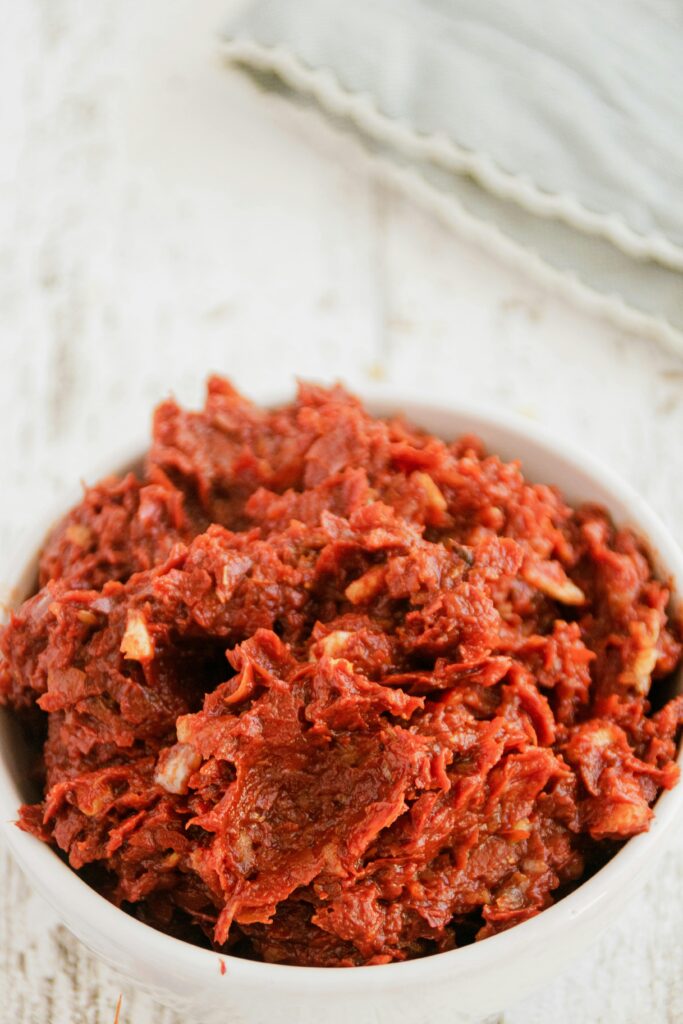
9. Pasta, Noodles, and Wraps–Quick, Versatile Staples for Vegan Meals-Vegan Kitchen Staples
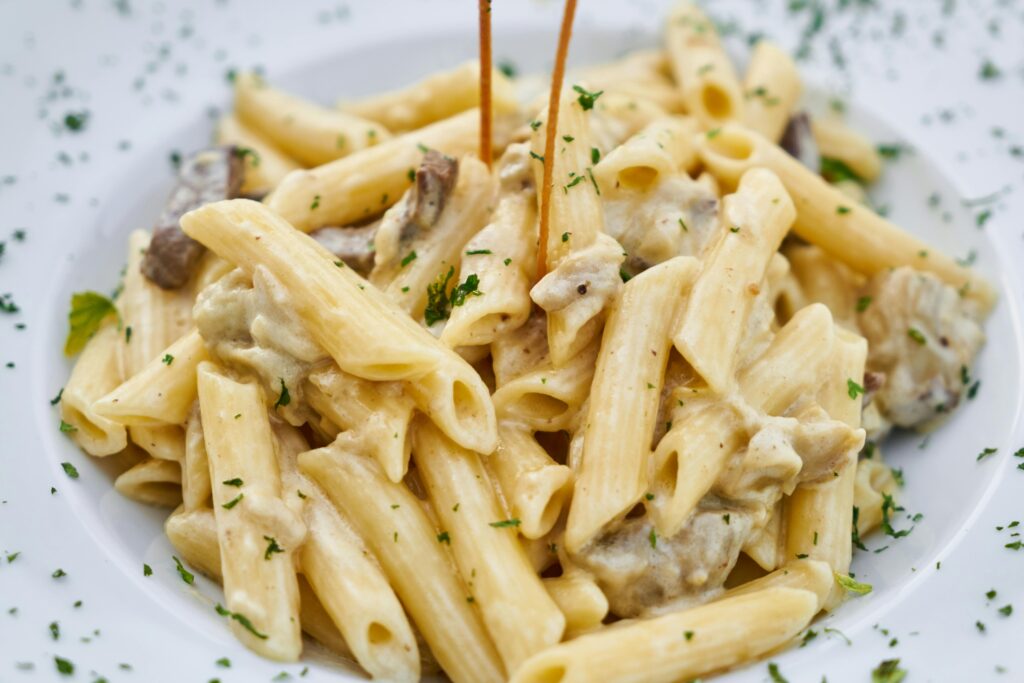
Pasta, noodles, and wraps are indispensable pantry staples for any vegan kitchen. These ingredients provide the perfect base for a wide variety of meals, from comforting pasta bowls and stir-fries to fresh wraps and tacos. Most dry pasta and many types of noodles are naturally vegan, making them incredibly convenient and versatile for quick and satisfying meals. Whether you’re in the mood for something light and fresh or hearty and filling, these pantry essentials are here to help you whip up delicious dishes in no time.
Pasta
Pasta is one of the most beloved vegan-friendly ingredients. In its simplest form, pasta is made from durum wheat and water, making it inherently plant-based. The variety of pasta shapes available—from spaghetti and penne to fusilli and farfalle—ensures that there’s a perfect match for every type of sauce, dish, or occasion. Pasta is also quick to cook, making it ideal for busy weeknight dinners or meal prep.
- Use in pasta bowls: Toss cooked pasta with your favorite sauce, whether it’s a classic marinara, creamy cashew alfredo, or a simple pesto. Add sautéed veggies, protein-rich ingredients like chickpeas or lentils, and finish with fresh herbs and nutritional yeast for a savory, plant-based meal.
- Pasta salads: Pasta also works wonderfully in cold pasta salads. Combine cooked pasta with fresh vegetables, greens, beans, and a tangy vinaigrette for a satisfying, make-ahead lunch or picnic dish.
- Stir-fries and casseroles: You can even use pasta in stir-fries and casseroles. Simply cook the pasta al dente and then sauté it with stir-fried veggies, tofu, or tempeh, along with your favorite Asian-inspired or Italian-style sauces.
Try: For a healthier and more nutrient-dense option, try whole wheat pasta, which is higher in fiber and adds a nutty flavor. You can also experiment with gluten-free or legume-based pastas like chickpea or lentil pasta, which offer additional protein and fiber.
Noodles-Vegan Kitchen Staples
Noodles come in a wide variety of types and textures, making them an incredibly versatile ingredient for any cuisine. From rice noodles to soba noodles to udon, these noodles can be used in a variety of dishes, from stir-fries to soups and salads. Most noodles are naturally vegan (though some types may contain eggs, so be sure to check labels).
- Rice noodles: Rice noodles are a popular choice in Southeast Asian dishes, especially in Thai or Vietnamese cuisine. They’re light, slightly chewy, and perfect for stir-fries, soups, and salads. Use them in dishes like vegan pho, pad Thai, or a fresh noodle salad.
- Soba noodles: Soba noodles, made from buckwheat flour, are delicious in both hot and cold preparations. They have a nutty flavor and are often served in Japanese dishes like zaru soba (cold soba noodles with dipping sauce) or in hearty broths with sautéed vegetables and tofu.
- Udon noodles: Udon noodles are thick, chewy Japanese noodles that work wonderfully in rich, savory soups or stir-fries. You can serve them with sautéed veggies, tofu, and miso for a comforting, hearty meal.
Try: Explore different types of noodles to suit the flavors of your dish. Rice noodles work well in fresh, light salads or stir-fries with peanut or soy-based sauces, while soba noodles pair beautifully with savory broths or cold salads with sesame dressing. Udon noodles are perfect for heartier, warming dishes.
Wraps
Wraps are one of the most convenient and versatile vegan meal options. From tacos to burritos to wrap sandwiches, these flexible flatbreads serve as the perfect vessel for all sorts of plant-based fillings. Whether you’re wrapping up fresh veggies, grains, or protein-rich ingredients like beans or tofu, wraps are a fantastic way to enjoy a quick, nutritious meal.
- Tacos: Corn tortillas are a staple for vegan tacos. Fill them with a combination of seasoned beans, sautéed vegetables, fresh salsa, avocado, and vegan sour cream. You can also add tempeh or tofu for extra protein.
- Burritos: Use large flour tortillas to make hearty burritos filled with rice, beans, guacamole, sautéed veggies, and vegan cheese. You can make them in advance for a satisfying meal on the go.
- Wrap sandwiches: Whole wheat or spinach tortillas are perfect for making vegan wrap sandwiches. Fill them with your favorite veggies, leafy greens, hummus, and avocado, or opt for a protein-packed filling like tempeh or chickpea salad.
- Lettuce wraps: For a lower-carb, fresh alternative, use large lettuce leaves (like Romaine or Butter lettuce) as a wrap for your taco or sandwich fillings.
Try: When looking for wraps, try whole wheat or sprouted grain tortillas for added fiber and nutrients. If you’re gluten-sensitive or looking for a gluten-free option, you can use corn tortillas or gluten-free wraps, which are often made from brown rice flour or tapioca.
Why You Should Always Have Pasta, Noodles, and Wraps on Hand
These staples are not only quick to prepare, but they also provide the perfect base for a wide variety of flavors and cuisines. They’re budget-friendly and can be stored for long periods, so you’ll always have the makings of a satisfying meal, even on busy days.
- Quick and easy: Whether you’re cooking up a bowl of pasta or stir-frying some noodles, these ingredients make for fast, easy meals that don’t require long cooking times.
- Customizable: Pasta, noodles, and wraps are incredibly customizable. Add whatever vegetables, legumes, grains, or proteins you have on hand to create a balanced, satisfying dish.
- Meal prep-friendly: These ingredients are great for meal prepping, especially when you want to make a large batch of pasta salad, stir-fry, or burritos. You can store wraps and pasta in the fridge for quick lunches or dinners.
Pro Tip: Stock a Variety of Shapes and Types
When stocking your pantry, it’s a good idea to have a variety of pasta, noodles, and wraps on hand. Each type serves a different purpose and provides a unique texture or flavor to your dish. For example, having rice noodles for Asian-inspired dishes, whole wheat pasta for Mediterranean or Italian-style meals, and corn tortillas for Mexican dishes ensures that you’re ready for any type of cuisine or craving.
Pasta, noodles, and wraps are incredibly versatile ingredients that can easily be turned into quick, flavorful vegan meals. They offer endless possibilities, whether you’re preparing a comforting Italian pasta dish, a spicy stir-fry, or a light and fresh wrap for lunch. With just a few pantry staples, you can create delicious meals that suit any occasion, taste, or dietary need.
🍌 10. Fruits and Vegetables
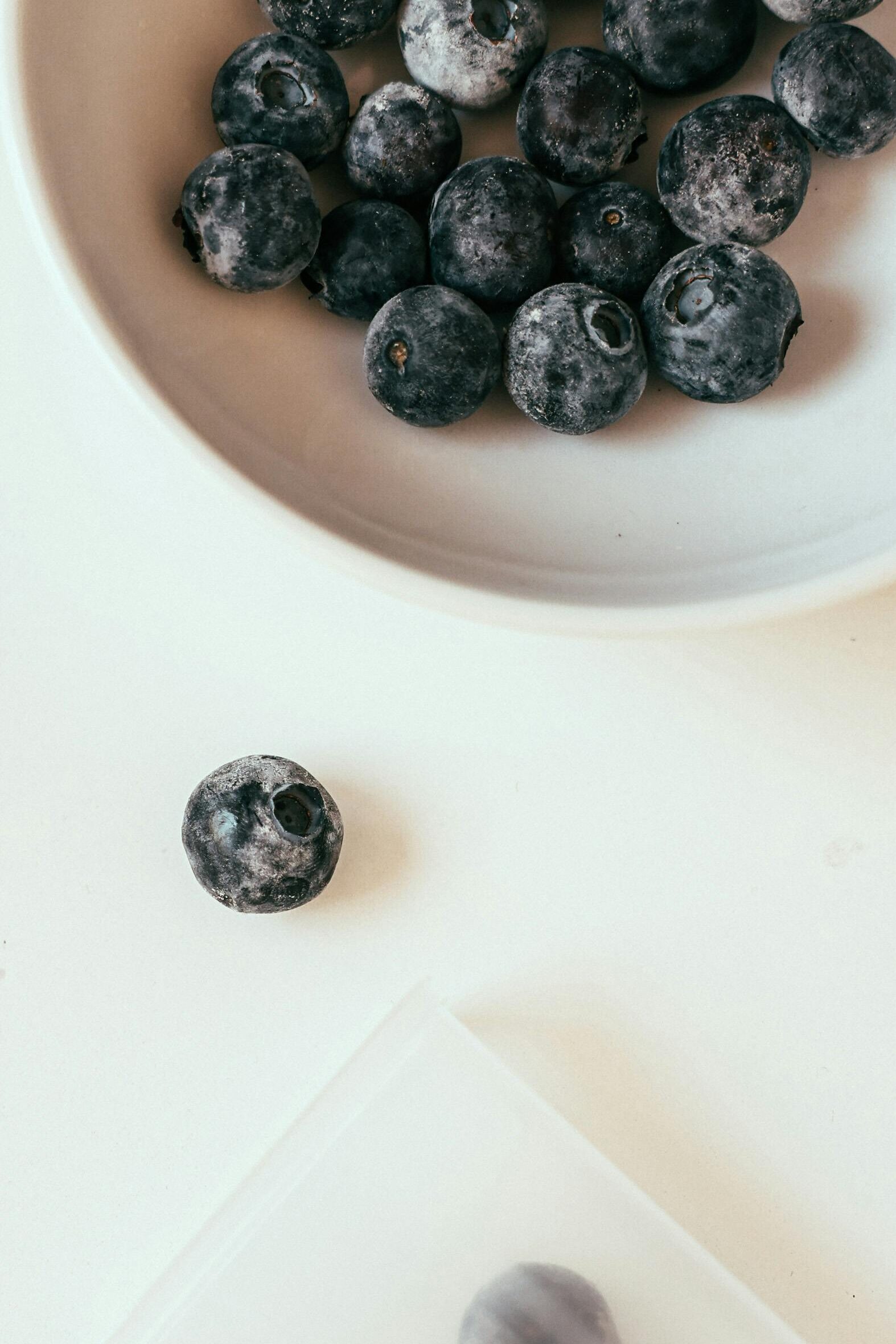
Fruits and vegetables are the foundation of any healthy vegan diet, offering an abundance of vitamins, minerals, fiber, and antioxidants to support overall health. While fresh produce is often celebrated for its nutritional benefits, frozen fruits and vegetables are just as nutritious, affordable, and convenient. They’re available year-round, reduce food waste, and help keep your kitchen stocked with wholesome ingredients for a variety of meals. With a little creativity, frozen fruits and vegetables can be used in everything from smoothies and stir-fries to soups and roasted sides.
Why Frozen Fruits and Vegetables?
Frozen produce often comes straight from the farm and is flash-frozen to preserve its nutrients at their peak, making it just as nutritious as fresh options. It’s also incredibly convenient since you don’t have to worry about spoilage, and it’s often more affordable than buying fresh produce. Having a variety of frozen fruits and vegetables in your freezer can save you time and money while ensuring that you always have healthy ingredients on hand.
- Convenience: Frozen fruits and vegetables are pre-washed, pre-chopped, and ready to cook, making them perfect for quick meals. No peeling, chopping, or worrying about wasting produce that might go bad in your fridge.
- Affordable: Frozen produce can be more cost-effective than fresh, especially when certain fruits or vegetables are out of season or expensive. Stocking up on frozen options ensures you’re never without nutritious ingredients.
- Reduced Food Waste: Since frozen produce lasts much longer than fresh, you can prevent food waste. It also gives you the flexibility to use only what you need and save the rest for later.
Fruits – A Sweet Addition to Your Vegan Meals
Fruits are an essential part of a balanced vegan diet, offering natural sweetness along with key nutrients like vitamin C, fiber, and antioxidants. They’re perfect for adding flavor to a variety of meals, from breakfast bowls to smoothies, desserts, and snacks.
- Smoothies: Frozen berries, mangoes, bananas, and peaches make for a creamy, nutrient-packed smoothie base. Blend with plant-based milk, greens, and seeds for a wholesome breakfast or snack.
- Baking: Frozen fruits, like blueberries or raspberries, are excellent for baking. Toss them directly into muffin or pancake batter for a burst of flavor.
- Toppings and snacks: Frozen mango chunks or pineapple can be eaten straight from the freezer as a refreshing snack or used as a topping for oatmeal, yogurt (or dairy-free alternatives), and granola bowls.
Try: Frozen bananas are perfect for making vegan “nice cream,” a healthy ice cream alternative. Simply blend frozen bananas with a splash of plant-based milk for a creamy, dairy-free treat.
Vegetables – The Heart of Hearty Vegan Dishes
Vegetables are incredibly versatile, offering an abundance of nutrients such as vitamin A, potassium, iron, and fiber. Frozen vegetables retain much of their nutritional value, making them an ideal addition to your vegan meals. They can be used in a variety of dishes, from savory stir-fries to soups and even side dishes.
- Stir-fries: Frozen vegetables like peas, mixed bell peppers, carrots, and broccoli are perfect for quick stir-fries. Simply sauté them with your favorite soy sauce, garlic, and tofu for a tasty, nutrient-packed meal.
- Soups and stews: Frozen veggies like spinach, peas, or green beans are great for adding to soups and stews. Their convenient frozen form means you don’t have to worry about chopping or prepping, and they add great flavor and nutrition.
- Roasted vegetables: Roasting frozen vegetables like brussels sprouts, cauliflower, or sweet potatoes is an easy way to create a flavorful side dish. Just toss them in olive oil, season with your favorite herbs, and roast until golden and crispy.
- Veggie burgers: Blend frozen vegetables like corn, peas, and carrots into a veggie burger mix with chickpeas or lentils for a satisfying homemade patty.
Try: For a quick, filling side, try roasting frozen broccoli or cauliflower with some garlic powder, olive oil, and a squeeze of lemon juice for a tasty, low-effort dish.
Bonus: Help Reduce Food Waste and Keep Your Kitchen Stocked
One of the greatest benefits of stocking up on frozen fruits and vegetables is that it can significantly reduce food waste. With fresh produce, it’s easy to buy too much and let it go bad before you get the chance to use it. Frozen produce eliminates this concern, as it can stay in your freezer for months, ready to use whenever you need it. By purchasing in bulk and freezing seasonal produce, you’ll always have affordable, healthy options at your fingertips.
Pro Tip: Stock a Variety for Different Dishes
When stocking up on frozen fruits and vegetables, it’s a good idea to buy a mix of versatile options. Some of the best all-around frozen produce includes:
- Frozen spinach: Perfect for adding to smoothies, soups, and stews or sautéing as a side.
- Frozen peas: A great addition to stir-fries, pasta dishes, and casseroles.
- Frozen berries: Ideal for smoothies, desserts, or snacking.
- Frozen mixed vegetables: A blend of veggies like carrots, peas, and corn can be used in stir-fries, soups, or as a simple side.
- Frozen cauliflower: Excellent for making vegan mashed cauliflower, cauliflower rice, or adding to soups and stews.
Versatility of Frozen Produce
Frozen fruits and vegetables can be used in a wide range of cuisines and recipes, making them an indispensable part of your vegan pantry. Whether you’re cooking Asian-inspired stir-fries, Mediterranean-inspired grain bowls, or hearty American-style soups and stews, having a selection of frozen produce gives you the flexibility to experiment and create flavorful meals any time you want.
Fruits and vegetables, whether fresh or frozen, are the building blocks of a nutritious vegan diet. With their wide array of nutrients and versatility in cooking, they are essential for creating delicious and healthful meals. By keeping frozen produce on hand, you can ensure that you always have these vital ingredients available, helping to reduce food waste and making meal prep quicker and easier.
Some Extra Tips:
- Keep basic spices: Turmeric, cumin, garlic powder, smoked paprika, cinnamon, chili flakes.
- Nutritional yeast: Great for adding cheesy flavor and B12!
- Plant-based protein powder: Handy for active lifestyles or smoothies.
- Stock up on quick snacks: Vegan protein bars, dark chocolate, popcorn.
Final Thoughts
By stocking your kitchen with these plant-based essentials so you’ll always be ready to prepare tasty and healthy vegan meals—no last-minute stress required. Plus, it makes the transition to veganism so much easier and more enjoyable.
Did we miss any of your favorite vegan kitchen staples?
Let us know in the comments below!
READ: WHAT IS VEGANISM?
ALSO READ: 7 COMMON MYTH OF VEGANISM LIKE NO PROTEIN AND MORE

